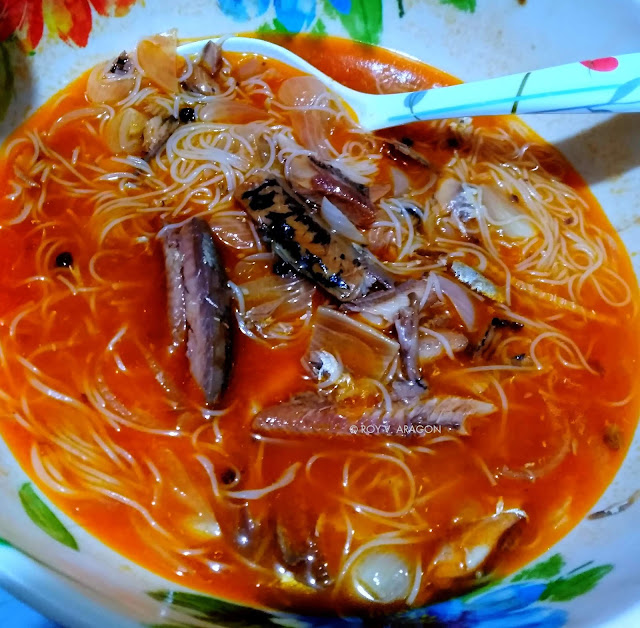On a 2013
pannakipunsion (going to an occasion, or foodie trip for that matter), this time the christening of the daughter of a writer-friend, in Ballesteros, Cagayan, we were feted with the usual local community
handaan or
sagana, and here’s you’ll find some unusually delicious dishes meant for special occasions, that teased our eager palates. You can see here the traditional pork
igado, dinardaraan and
adobo; there’s a native chicken adobo, too; and the inevitable
pancit bihon. And some more:
Here are some real appetizer—coconut heart/bud (
ubog ti niog) cooked in coconut milk and spiced with chili and raw onions and adorned with bits of fried pork intestines/tripe; and the obligatory beef
kappukan, of course:
And yes, there’s a veggie, this a
dinengdeng, not
pinakbet, actually sautéed
dinengdeng, of squash fruit and flowers, t
arong, sili, okra, with fried pork meat and fat:
The
ubog ti niog is the favorite:
And there’s the specialty of the Ilokano writer-poet Jobert Pacnis (father of the christened girl)—
ginettaan or
sinursuran a bulong ti ariwat (
ariwat leaves cooked in coconut milk; ariwat [Tetrastigma harmandii Planch.],
ayo in Tagalog, is vine with edible sweet, sour fruit), a sweet and really sour dish to get rid of your
suya from all those fatty and meaty pork dishes:
:::::




































































